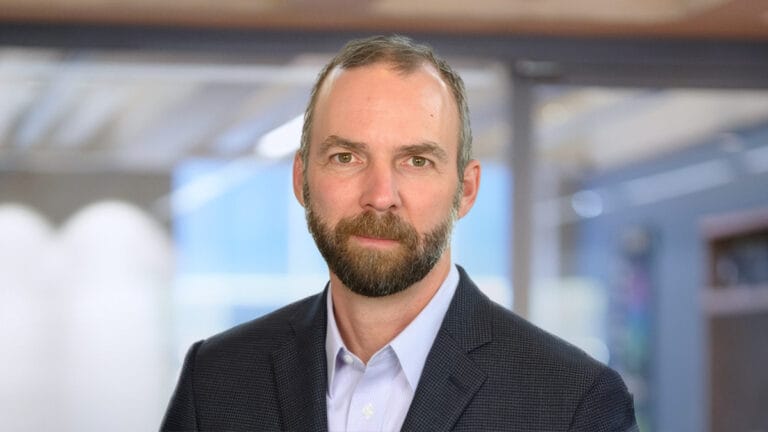
According to Linda Robertson, GC and Director of Assurance at Melbourne’s La Trobe University, getting a seat at the table faster and adding value across the organization have been the standout benefits of her mission to introduce new technology to her legal department. And although the two-year implementation process was anything but straightforward – long-winded because of the pandemic, coupled with a major restructuring of the university – the results have been worth the wait.
“For the first time, we’ve been able to put a dollar cost on what the legal team is saving the business.”
“The work continues to come in, but what we’re working on now is quite different. It’s not as transactional,” says Linda. “Although we’re still running up to 1,500 matters a year, they are now far more complex and add real value to the business. And, for the first time, we’ve been able to put a dollar cost on what the legal team is saving the business.”
However, it was a challenge to get to the stage where her team and the stakeholders were happy to progress her desire for a tech system upgrade. As she explains, the university environment is an evolving space in which change is a constant. “But due to human nature, not a lot of it sticks because people tend to revert to their ways of doing things. Revolutionizing our way of working was a tough journey for a new team to embark on, and while we’re not there yet we are well on our way. The results to date have been fantastic.”
The overall workforce at La Trobe fluctuates hugely, with between 2,500 to 7,500 employees at any given time. As Linda points out, not only is the university a genuine business – it’s a big one. Five years ago, when she became GC, the legal function numbered just seven in comparison to today’s 13, and the demands placed upon the team coupled with outdated tech systems was creating problems.
“Team members were spending 30 percent of their time working with insufficient systems which was, quite frankly, a nightmare. At times they were spending anything from half a day to an entire day just trying to keep up with the filing. My initial thought was that if I could unlock even part of that inefficiency and give them back that time, we’d be able to work through matters faster and have the capacity to take on more high-value work.”
Bringing the team along on the journey was paramount, because there was a genuine but unfounded fear within the legal function that the introduction of a new platform would lead to job losses. And because she needed the capital to buy new technology, Linda also had to convince the university that making such an investment was the correct decision. She knew that while the organization valued what the legal department offered, the perception was that it wasn’t enough to put the legal team at the strategic leadership table. And, just as importantly, over the years there’d been no impetus to invest in the team. “Whilst I don’t think it was ever said that the legal team was a cost center, that was the thought that permeated throughout the organization.”
Fortunately, by the time she broached the subject, the organization was prepared to listen, and as well as getting the green light to purchase a new platform, over time she has also been able to increase her team’s headcount.
“It was a strategic dance with the legal team and management,” Linda admits. “The team is fantastic, and I didn’t want any of them to go. In fact, I wanted to grow the team, and I wanted them to feel secure and stable and continue to do great work. I’m pleased to say the value of their work has been recognized and openly appreciated by the organization.”
With management, Linda had to engage in a different sort of dance. While they had what she needed – the funds to purchase the new software – they also had ultimate control of the budget. Getting senior stakeholders onside proved to be a masterstroke; once she’d convinced them of her “grand plan”, they were prepared to advocate on her behalf. She didn’t even need to be in the room. It was, she says, incredibly powerful to have senior leadership pushing for investment in the legal team.
On the implementation side, finding time to work with each stakeholder group was another key factor. The legal function worked with each team individually and ran workshops that were tailored to each stakeholder group’s needs. “We did it in a staged way, prioritizing our key clients, and once they were on board we began working with others, and so on. It took about nine months to complete the implementation across the whole university.”
Pushback was avoided because Linda had seeded the idea of introducing a new tech system with key stakeholders well in advance of it happening. This meant that by the time the changes happened, everyone was ready and on board.
“We’re getting to the table faster on big matters that are happening at the university, and it’s added incredible value across the whole organization.”
With the team’s new legal technology software successfully in situ, Linda is now able to prepare monthly reports for the university’s executive. These show a dashboard of the matters her team is running, the areas of work that they involve, and the level of complexity of those matters. And thanks to the more efficient way of working, the team now has more time for high-value work and for engaging with stakeholders.
“We’re getting to the table faster on big matters that are happening at the university, and it’s added incredible value across the whole organization,” says Linda. “I can see by the requests that come in and the things the team are involved in that it’s a quantum leap from where we were a few years ago.”
In addition, the legal team is one of three departments across the university which is running a pilot with an AI platform. It’s a work in progress; each team involved has different needs, and assessments as to its effectiveness are yet to be completed. However, Linda is matter of fact about the introduction of AI: “Universities are all about research, learning and development,” she says, “so as an organization we are embracing AI.”
Despite the challenges posed by Covid, the resulting lockdowns and the major restructuring of the university, Linda’s perseverance and strategic approach, bolstered by her ability to build strong relationships with senior stakeholders, has led to the successful implementation of a new tech system. The legal function now operates more efficiently, allowing for a greater focus on high-value work, and consequently their relationships across the organization have strengthened.
Linda and her team at La Trobe University successfully adopted LawVu’s legal workspace to level up their in-house legal function. To learn more, click here.
To watch the full recording of Linda’s session at InView Sydney 2024, click here.


